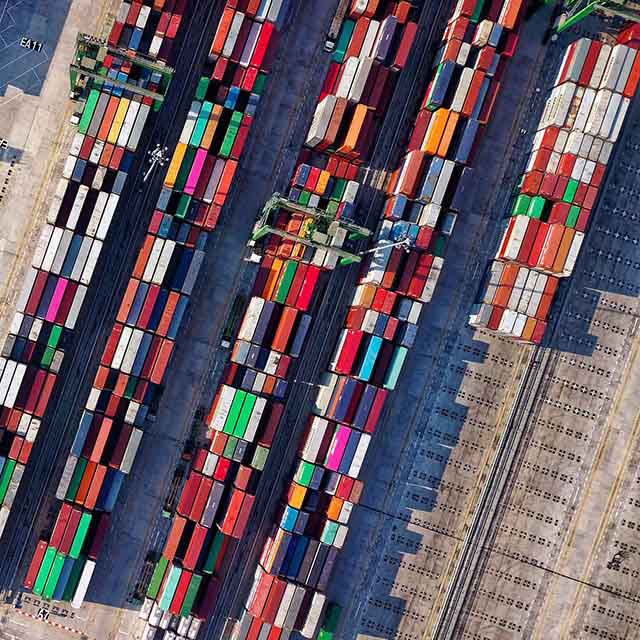
Better supply chain visibility through data sharing and dissemination
About the report
There is a complex story behind each package delivered to your door, every product stocked on a store shelf, and each piece of building material used in construction.
Experts from The University of Queensland’s Australian Institute of Business and Economics are working to uncover it.
For each item to reach its destination, it must be shipped, stored, driven, railed or flown from the producer to its new home. But the details of this journey are often unclear to all industry participants and this can impact on overall transport network efficiency. For instance, items can encounter delays in warehouses, two trucks with half-loads heading to the same destination may not coordinate, and information on shipment delays is not always passed on to the drivers assigned to pick their cargo.
A team of researchers from the Institute have completed a study for iMOVE - a consortium of 44 industry, government, and research partners - to identify the data needed for policy-makers and stakeholders to see the full story of the freight and supply chain sector as a single transport network.
Their recommendations attracted an $8.5 million commitment in the recent Federal budget, including the establishment of a Freight Data Hub and a Freight Data Exchange Pilot.
Dr Elnaz Irannezhad, who helped lead the study, said that the project identified what data was already available, what was needed to complete the data picture, what technologies can bridge the data gaps and under what circumstances companies in the sector would be willing to share information.
“Strategic freight planning requires asking ‘how, why what, where, when and how much,” she said.
“While the amount of information across many aspects of freight transport is extensive, there is still room for improvement in how we capture, collect and particular how we share data.
“The project showed that there are several critical areas of the national freight network where data does not exist, or the level of data is not fit-for-purpose.
“There is a general lack of coordination in data collection or dissemination, and a lack of cooperation between data users, collectors and disseminators.
“This has been driven, in part, by our federal system of government where states have been the custodians of their own transport networks with little integration or coordination with other jurisdictions.
Information asymmetry and lack of interoperability in Australian supply chain, both across states and across transport modes, creates inefficiency, but there are now technological solutions available to tackle these inefficiencies.
Dr Irannezhad said the benefit of the project was that the government would be able to prioritise what data needed to be collected first and what technological solutions were available, as well as being able to more effectively plan major infrastructure investments.
“This will allow for policy recommendations and planning based on a strong evidence base, through analysis and modelling,” she said.
“The proposed Freight Data Hub will play an essential and central role in coordinating and integrating the public and private sectors to collect, analyse and disseminate freight data.
“This hub, if it is set up as an independent trusted body, can engage both private and public sector, maintaining their businesses interests and confidentiality concerns.
“The proposed Freight Data Exchange Pilot, however, is a more immediate project providing supply chain visibility.
“This pilot will focus on data sharing practices among supply chain actors to improve efficiency and productivity.”
The Institute’s researchers partnered with iMove and the Australian Road Research Board, Deakin University and the University of New South Wales.
Professor Damian Hine also helped lead the project and Senior Fellow Joseph Branigan was engaged as a specialist advisor to iMOVE.
The study was commissioned in November 2018, and delivered in January 2019.



